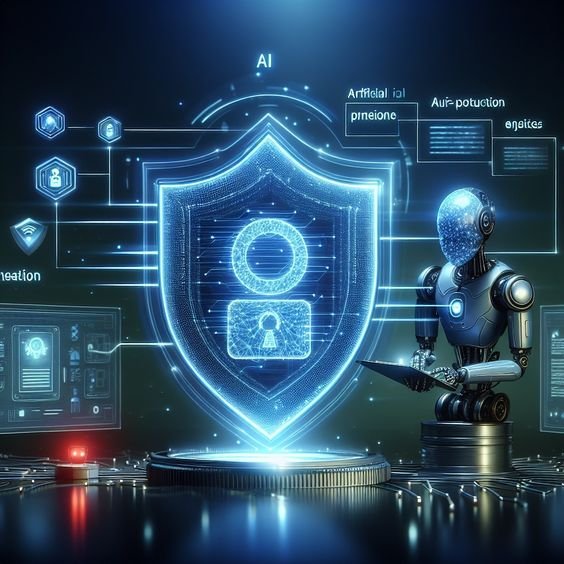
The rise of generative AI has changed how people work, and ChatGPT stands at the center of this revolution. Since OpenAI launched ChatGPT, employees in nearly every industry have integrated it into their daily routines. From drafting emails to summarizing reports, the chatbot performs tasks in seconds that used to take hours. But as its popularity grows, so do the debates.
Is ChatGPT truly a productivity booster, or does it create new risks in the workplace? Some hail it as a digital co-worker, while others view it as a shortcut that could backfire. Companies must now decide how to adopt the tool responsibly without compromising ethics, privacy, or quality.
Let’s explore the different ways ChatGPT affects the modern workplace—and whether it ultimately helps or hinders progress.
ChatGPT as a Productivity Powerhouse
Many employees now rely on ChatGPT as a digital assistant. They use it to brainstorm ideas, clean up their writing, draft meeting agendas, or automate repetitive tasks. In these cases, ChatGPT acts as a time-saver, allowing workers to focus on higher-value tasks.
For example:
- Marketing teams use it to draft blog outlines, social media captions, or product descriptions.
- Customer service teams create scripts for common queries or auto-reply templates.
- Developers ask it to write or debug code snippets.
- HR departments use it to draft policy documents or onboarding materials.
These teams report faster turnaround times, fewer bottlenecks, and improved output. Employees no longer face blank-page syndrome or writer’s block. ChatGPT keeps the work flowing and acts like an ever-available brainstorming partner.
Improved Accessibility and Skill Bridging
ChatGPT also levels the playing field. Not every employee writes with perfect grammar, speaks English as a first language, or feels confident in technical documentation. The chatbot bridges skill gaps by polishing communication and suggesting alternatives.
For international teams, ChatGPT offers translations, tone adjustments, and cross-cultural clarity. This reduces miscommunication and boosts confidence. Junior staff also gain more independence. Instead of waiting for a manager’s input, they turn to ChatGPT for first drafts or quick answers.
In these cases, the tool doesn’t replace expertise—it amplifies it. It allows people to learn faster, collaborate better, and contribute more consistently.
Training and Onboarding Support
Many companies now use ChatGPT to support training and onboarding. Instead of overwhelming new hires with manuals and policies, firms create interactive learning experiences using AI chatbots.
Employees ask questions like:
- “What’s the leave policy for remote workers?”
- “How do I file an expense report?”
- “What software do we use for internal communication?”
ChatGPT responds instantly with clear answers, reducing the workload on HR and IT support. It accelerates onboarding and helps new employees feel confident from day one.
The Dark Side: Over-Reliance and Quality Concerns
Despite its benefits, ChatGPT comes with drawbacks. One major issue involves over-reliance. Employees who use ChatGPT for every task may lose touch with core skills like writing, problem-solving, or research.
For example:
- A marketing executive who stops writing emails personally might lose their unique brand voice.
- A junior analyst who uses ChatGPT for summaries may skip reading the source material.
- A customer service agent might follow a scripted AI reply without understanding the customer’s real issue.
This leads to shallow work, where speed replaces depth. Companies that rely too heavily on AI-generated content may also risk generic messaging, reduced creativity, and weakened brand identity.
Misinformation and “Hallucinations”
ChatGPT does not know the truth—it generates responses based on patterns in data. Sometimes, it confidently delivers false information, known as AI “hallucinations.” If employees don’t fact-check, they risk spreading inaccuracies.
Imagine the consequences:
- An HR manager shares outdated compliance information.
- A finance analyst builds a report on flawed assumptions.
- A legal team uses AI-written text that misses crucial clauses.
Even small errors can trigger reputational or legal consequences. Businesses must train employees to validate ChatGPT’s output, not blindly trust it.
Data Privacy and Confidentiality Risks
When employees input sensitive company data into ChatGPT, they may unknowingly breach privacy rules. OpenAI processes queries through external servers, and unless organizations use enterprise-grade AI, the risk of data exposure remains.
Some real risks include:
- Uploading client details, trade secrets, or unreleased product info
- Using ChatGPT to rewrite confidential internal documents
- Sharing HR data while drafting termination or performance notices
Firms must set clear policies around what employees can and cannot share with AI tools. Without guardrails, the risk of data leaks grows rapidly.
Job Displacement Anxiety
While ChatGPT boosts productivity, it also fuels fears around job security. Many workers wonder: “If AI can do this task, do you still need me?” This anxiety affects morale, especially in roles that involve writing, data entry, or support.
Leaders must navigate this carefully. Instead of replacing people, they should reframe ChatGPT as a tool that enhances human work, not substitutes it. The goal should be augmentation—not automation.
Companies that provide reskilling programs and transparent communication will maintain trust and prepare their teams for the AI-augmented future.
Governance, Compliance, and Ethical Use
Firms now face the challenge of creating internal AI usage policies. Who can use ChatGPT? For what tasks? Should every department follow the same rules?
Some companies implement:
- Whitelists of approved AI tools
- Training modules on AI ethics and data security
- Content review systems for AI-generated outputs
- Audit trails for accountability
Without governance, misuse becomes inevitable. One careless employee could leak confidential plans. One unchecked AI response could spread harmful stereotypes or offensive language.
Ethical use also matters. ChatGPT can reinforce bias if trained on unfiltered datasets. Responsible use requires human oversight, cultural sensitivity, and inclusivity checks.
Real-World Case Studies
Several companies already show how to integrate ChatGPT effectively:
PwC UK
PwC incorporated ChatGPT into tax research and legal drafting. Instead of replacing jobs, it trained employees to use AI to enhance productivity. Lawyers now create first drafts faster and use human review to refine them.
Klarna
Klarna’s customer service team integrated ChatGPT to handle basic queries. As a result, agents focused on complex issues, and resolution times dropped by 20%. The tool became a teammate—not a threat.
Duolingo
Duolingo added ChatGPT to power conversational language practice. This helped users engage more deeply and boosted retention. The product team used AI to expand features, not cut jobs.
Conclusion: Tool or Trap?
ChatGPT can act as a massive help in the workplace—but only when people use it wisely. It saves time, boosts creativity, and bridges skills. It also creates risks: misinformation, over-dependence, and data exposure.
The difference lies in how organizations and individuals approach the tool. Those who treat ChatGPT as a co-pilot—not a replacement—gain the most. They check its output, protect their data, and use it to level up—not check out.
In the end, ChatGPT offers more help than hindrance—but only when people remain in the driver’s seat.
ALSO READ: AI in Cybersecurity: Latest Tools Used by UK Firms






